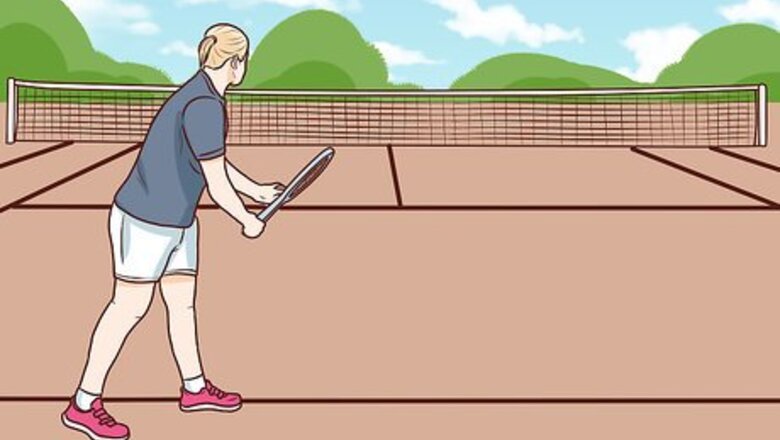
views
X
Research source
It may sound tricky, but with plenty of practice, you’ll be well on your way to having a great kick serve.
Positioning Your Body
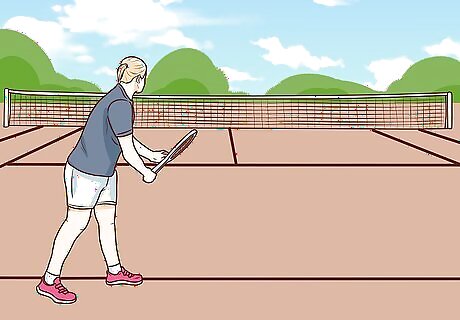
Stand with your shoulders square to the court. Stand behind the baseline (the line parallel to the net at the end of the tennis court). Stand sideways to the court with your shoulders lined up parallel to the baseline. This stance is used in nearly all tennis serves, but is especially important for a kick serve. Having your body square to the court allows you to impart as much spin to the ball as possible.
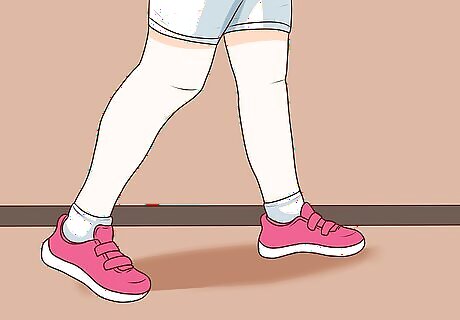
Keep your feet 2 feet (0.61 m) apart and behind the baseline. Situate your rear foot so that it’s parallel to the baseline and about 2.5 feet (0.76 m) behind the line. Then, position your front foot at a 45-degree angle with your toes pointing in towards the court. Make sure that your feet stay behind the baseline throughout the kick serve. If you step over the baseline, the serve may be disqualified.
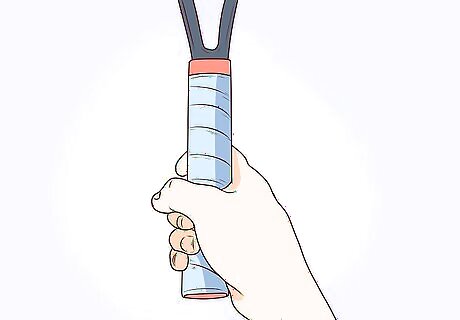
Hold the racket with a Western grip to achieve maximum topspin. To use a Western grip, hold the tennis racket in your dominant hand so the head is perpendicular to the ground. Place the lowest knuckle of your thumb against the top-left beveled edge of the shaft. Wrap your hand around the shaft so that your index finger just touches the tip of your thumb. Using a Western grip when hitting a kick serve allows for maximum spin and power. The Western grip is also often referred to as a continental grip. In non-technical terms, topspin means that the ball is spinning forward in the same direction that it's traveling. This will make the ball bounce high when it lands.
Setting up the Serve
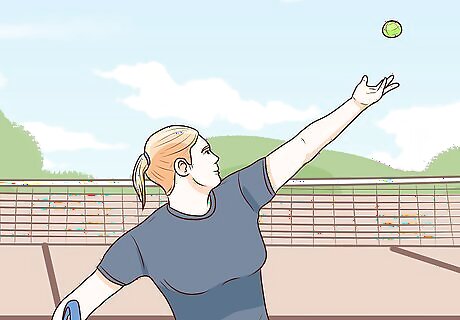
Toss the ball in the air above you and tilt your heat back to watch. Use your non-dominant hand to throw the tennis ball about 4–6 feet (1.2–1.8 m) into the air, so it reaches its peak slightly behind your head. Tilt your head back and keep your eyes on the ball. It’s important to watch the ball as it rises, or you will miss when you swing for it. This placement of the ball in the air will allow you to reach back and hit upwards on the ball, thereby creating maximum topspin. If the ball is in front of you when you throw it, you won’t be able to give it much spin.
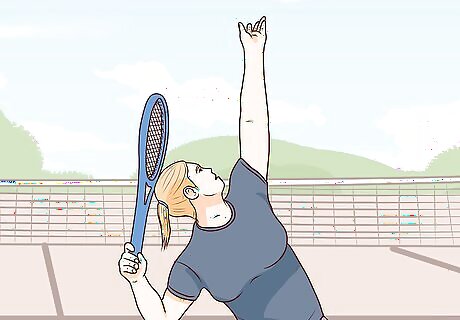
Bend your elbow and cock the racket back behind your head. Hold your racket low with your dominant hand while you’re tossing the ball in the air. As soon as you release the ball, bend your dominant elbow so that your fist comes close to your shoulder and rotate your dominant shoulder back. This wind-up will raise the racket and prepare you to hit the ball. When you’re fully wound up, the middle of the racket’s head should be at eye level. Winding up your arm like this will give you a great deal of serving power. A solid wind-up will also position your racket to imparts maximum spin to the ball.
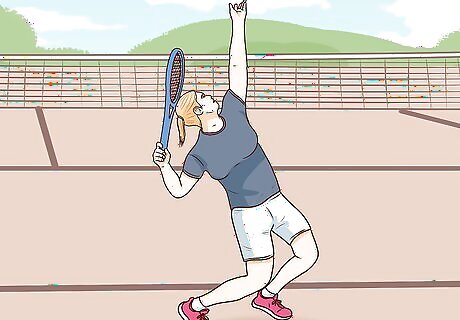
Arch your back and bend your knees to keep the ball in sight. As you reach the peak of your wind-up, bend your knees and lower your torso by 6–8 inches (15–20 cm). Push out your chest and arch your back so you can reach back behind you when you swing at the ball. Bending your knees will also allow you to lean your torso back so you can keep your eyes on the ball.
Striking the Ball
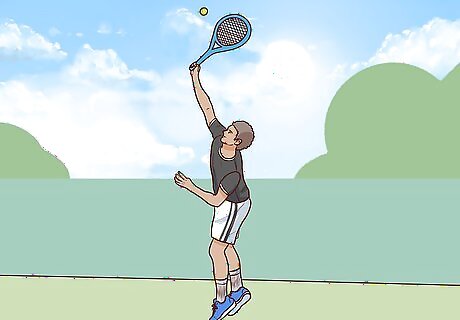
Extend your arm quickly and strike the ball at the peak of its arc. When you move to strike the ball, extend your arm and swing the racket up behind your head towards the ball. Extend your legs too, so that you jump about 2 inches (5.1 cm) high in the air. When your racket is at the same height as the ball, whip your wrist forward so that the head of the racket connects with the ball. It’s important that you do all of this while the tennis ball is at the peak of its arc. If you hit once the ball is coming back down, you won’t be able to put much spin on it.
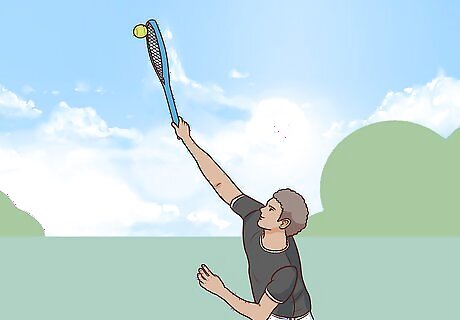
Push up and forward on the ball to give it an aggressive topspin. Swing your racket as if you’re going to hit through the ball. As soon as you feel the racket connect with the ball, straighten your elbow and "roll" your racket forward over the ball. Finish the serve with the racket at the level of hip opposite your serving hand. If you finish your serve and the hand holding the racket is still on the side of your body with your dominant arm, you haven’t hit through the ball and your serve won’t have any real power. Imagine that the ball has numbers on it, like those on the face of a clock. Strike the ball with your racket at the 7 o’clock position. Push your racket forwards and up over the ball until it’s at the 2 o’clock position. Done properly, this will create topspin on the ball.
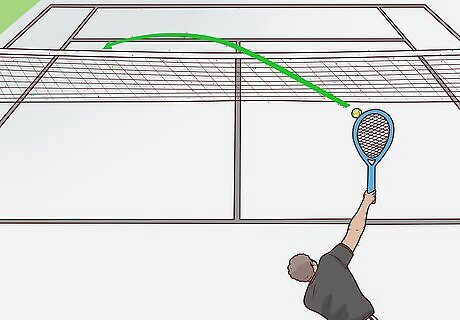
Aim at least 8 ft (2.4 m) deep in your opponent’s service box. Topspin causes the ball to go shorter in the court than a flat serve or a slice serve, so you will have to compensate by aiming deeper into the court. Keep your aim focused on the service box so that the ball doesn’t hit the net or land too far back in your opponent’s side of the court. The result will be that the ball lands perfectly: it will hit deep in the service box, then kick high. If you’re not familiar with tennis jargon, the service box is part of the tennis court on your opponent’s side. It’s in front of the service line (the line that horizontally bisects each half of the tennis court) and on the left side of the center service line (the line that vertically bisects the half of the tennis court in front of the service line). All initial serves must land in your opponent’s service box.
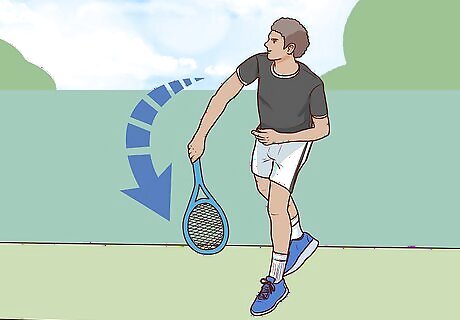
Follow through by bringing the racket toward your opposite foot. Following through will ensure that you’ve given the ball as much spin and power as possible. If you’re right handed, follow through by bringing the racket down so it’s nearly touching the toes of your left foot. The follow-through is reversed if you’re serving left-handed: once you’ve hit the ball, bring the racket down so it almost taps the toes of your right foot. Stay close to the baseline as you follow through. Don’t finish with your body too far into the court or you may trip over your own feet.Tip: Aiming deep and trying to hit hard through the ball often causes players to finish standing several feet inside the baseline. This can be troublesome because, when you are in this position, the returner can more easily hit the ball back at your feet. This may cause you to swing awkwardly and, mishit the ball or return the ball weakly.
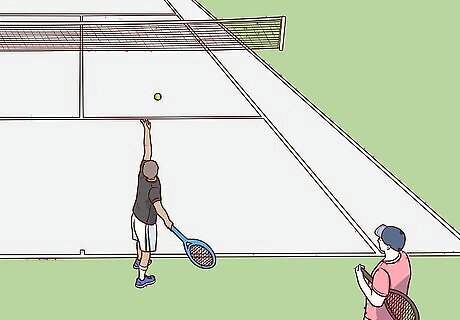
Practice serving or in pairs until you master the topspin serve. Practice will lead to perfecting your kick serve. Get a bucket of balls and practice your kick serve 20, 50, or 100 times in a row. Then, ask a more experienced tennis player to watch you and give you some pointers. Try going out to the courts with a friend and practicing. Having a receiver who gives constructive feedback will help you quick establish a powerful kick serve. You will find the kick serve to be a wonderful asset as you improve your tennis game. It’s a great way to keep opponents on their toes.
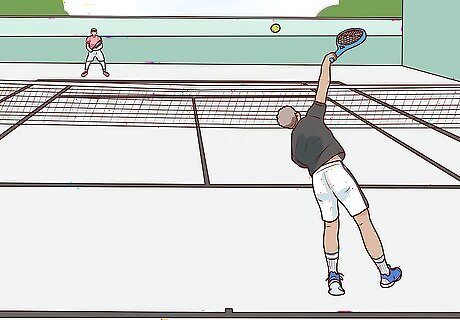
Use a kick serve as your second serve in a singles or doubles match. Tennis players use kick serves as an efficient and accurate second serve. They do this because a kick serve forces your opponent to return a ball that has tremendous spin and bounces higher than the normal flat or slice serve. As a second serve, the kick serve is more likely to surprise your opponent and keep you from losing a point. In tennis, if the first serve goes out of bounds, you’re given a second opportunity to serve without penalty. If you miss the second serve, you lose a point from your score. Once you are able to consistently lob the kick serve deep into your opponent’s service box, nail the spin so that it pops up to shoulder height, you will have mastered the kick serve.




















Comments
0 comment